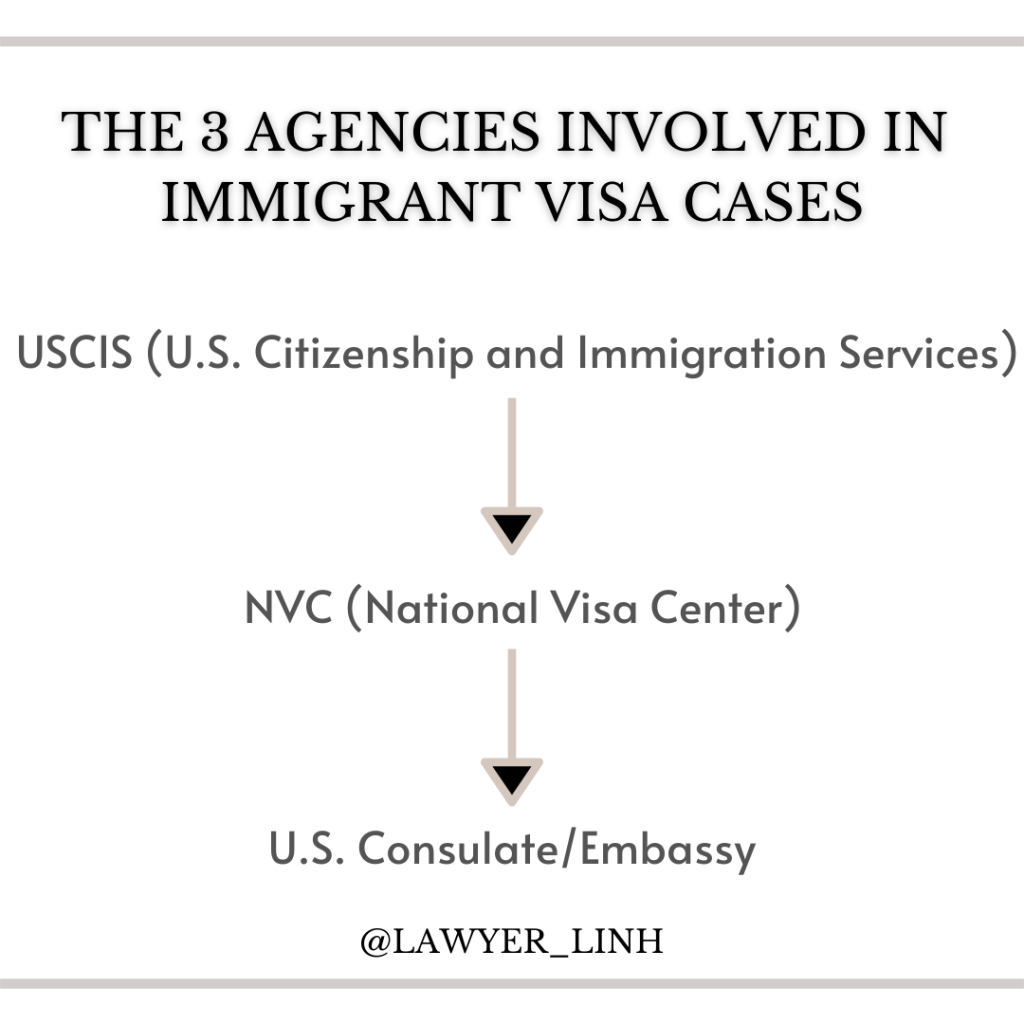I want to preface this post by saying that all three of these agencies are involved when a family member or employee is being petitioned for, and that person is not currently in the U.S. and will be processing at a U.S. consulate/embassy abroad. However, there are instances when a person is going through the immigration process that involves the I-601A stateside waiver process (you can read more about that process on this blog post), and dealing with these three agencies would also apply in those cases.
For anyone who wants to be petitioned for, or if the person is self-petitioning, to become a green card holder in the U.S., it always starts with a petition that is filed with U.S. Citizenship and Immigration Services (USCIS) along with the required evidence for that petition. Once USCIS has approved the petition, it will transfer it to the next agency – the National Visa Center (NVC). The NVC is located in the U.S. and serves as the middle agency between USCIS and the U.S. consulate/embassy abroad.
At the NVC stage, certain documentation will be required to be submitted. Most of the time, it is uploaded and submitted electronically to a portal. In some cases, the documents have to be mailed to them. The NVC will provide the website for the portal access, a case number, and an invoice ID number to access the portal for your particular case. The visa fees are also paid at this stage and are paid through the portal. When I am listed as the attorney on a case, the NVC will send me an email notifying me it has gotten the petition and will also provide this information to me so I can access this portal for my clients. Examples of documents that have to be uploaded include the applicant’s birth certificate, police clearance letter(s), and the applicant’s passport biographic page, among other documents. These are referred to as “civil documents.” In family-sponsored petitions, affidavit of support documents will also have to be uploaded.
Once the NVC has received and reviewed all the required documents, they will let the applicant know that the case is “documentarily qualified,” which means that all the documents are received and accepted, and the next step is working with the U.S. consulate/embassy to schedule the interview. The NVC will communicate with the consulate/embassy that will be interviewing the applicant to schedule the interview. Different consulates/embassies have different timeframes for appointment scheduling. Factors such as how well staffed they are and how many cases they have to process affect how long it will take for an interview to be scheduled, so no two consulates/embassies are the same as far as how long it will take for the interview to be scheduled. Sometimes it will take a few months, and with some consulates, it could be more than a year after the NVC has “documentarily qualified” the case. I know that the U.S. consulate in Ciudad Juarez, Mexico is the busiest consulate in the world, so the time it takes to get an interview scheduled there is longer than other consulates.
Once the interview is scheduled, there are specific things the applicant must do and documents that the applicant needs to bring to the interview. Each consulate/embassy has a set of instructions that the applicant must follow. Before the interview, the applicant will need to get fingerprints taken and a medical exam done, but these should not be done until the interview is scheduled.
During this pandemic, we have seen slowdowns, and some consulates/embassies have also shut down intermittently due to outbreaks. However, don’t let that stop you from starting the immigration process because eventually, the case will be processed.
If you would like to schedule a consultation with me, please call 801-883-8204.



